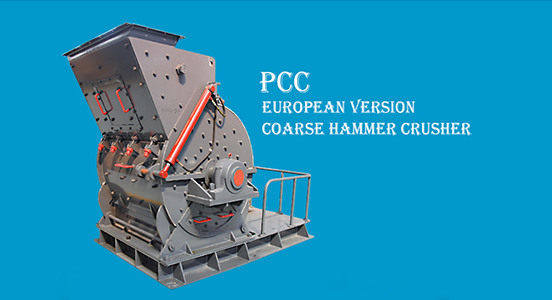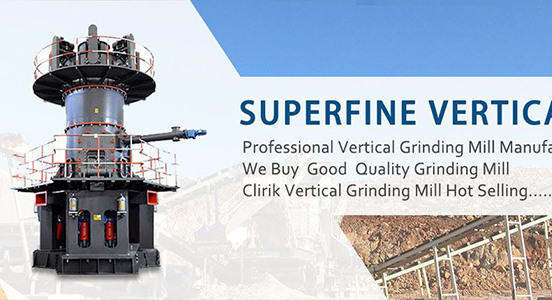HGM125 32-Roller Ultrafine Grilling Mill
Source:nclirik
Posted:2025-04-10
The HGM125 32-Roller Ultrafine Grinding Mill is a state-of-the-art industrial machine engineered for high-volume, precision grinding of minerals and raw materials into ultrafine powders.

Renowned for its robust design, exceptional productivity, and versatility, this mill is widely adopted in industries requiring large-scale processing of materials such as limestone, calcium carbonate, marble, and industrial minerals.
Below is a detailed overview of its structure, capabilities, and applications.
The mill’s defining feature is its 32-roller configuration, strategically arranged in four distinct layers to optimize grinding efficiency:
1.2 Heavy-Duty Construction
Built for industrial durability, the mill features:
The mill operates on a high-torque power system, comprising:
The mill’s throughput varies depending on the target particle size:

3.2 Sector-Specific Applications
The multi-layered roller system distributes grinding pressure evenly, reducing energy consumption by 15–20% compared to conventional Raymond mills.
4.2 Precision and Flexibility
Its ability to process 100–200 tons of material daily across diverse industries—from construction to high-tech manufacturing—makes it indispensable for enterprises prioritizing scalability and efficiency.
While challenges such as maintenance costs exist, its proven ROI, adaptability, and global success stories position it as a cornerstone of modern mineral processing.
For industries seeking to dominate high-volume markets, the HGM125 is not just a machine but a strategic asset driving long-term growth.
If you are interested in our HGM125 32 roller grinding mill, or want to know more about our products and services, please feel free to consult online or leave a message.
CLIRIK Machinery looks forward to establishing a long-term and stable cooperative relationship with you, jointly promoting the progress of industrial grinding technology, and creating a brilliant future together.


Renowned for its robust design, exceptional productivity, and versatility, this mill is widely adopted in industries requiring large-scale processing of materials such as limestone, calcium carbonate, marble, and industrial minerals.
Below is a detailed overview of its structure, capabilities, and applications.
1. Design and Engineering
1.1 Multi-Layered Roller SystemThe mill’s defining feature is its 32-roller configuration, strategically arranged in four distinct layers to optimize grinding efficiency:
- Upper Two Layers: Each layer contains 7 rollers (14 rollers total), designed to pre-crush and disperse raw materials into smaller particles.
- Lower Two Layers: Each layer houses 9 rollers (18 rollers total), applying intensified grinding pressure to refine particles to ultrafine sizes (as small as 5–10 microns).
This layered approach ensures progressive material reduction, minimizing energy waste and maximizing output consistency.

1.2 Heavy-Duty Construction
Built for industrial durability, the mill features:
- A reinforced steel frame capable of supporting its substantial weight and height (exact dimensions vary based on installation requirements).
- Wear-resistant components, including alloy rollers and grinding rings, engineered to withstand abrasive materials and prolonged operation.
- A vertical design that enhances stability and reduces floor space requirements.
The mill operates on a high-torque power system, comprising:
- Main Grinding Unit: Powered by a 185 KW motor, driving the rotation of rollers and generating the force needed for material compression.
- Classifier: A 75 KW motor powers an integrated dynamic air classifier, which precisely segregates particles by size (e.g., 200 mesh or 1000 mesh).
- Blower System: A 132 KW centrifugal blower generates airflow to transport ground materials through the classification circuit, ensuring seamless integration of grinding and sorting processes.
Total power consumption reaches 392 KW, reflecting its industrial-scale capabilities.
2. Performance and Production Capacity
2.1 Output EfficiencyThe mill’s throughput varies depending on the target particle size:
- Coarse Grinding (200 mesh): Achieves 12 tons per hour (t/h), suitable for applications like cement additives, agricultural lime, or construction materials.
- Ultrafine Grinding (1000 mesh): Delivers 6 t/h, ideal for high-value industries such as pharmaceuticals, premium coatings, and advanced ceramics.
- Single-Shift Operation (8–12 hours): Produces 80–100 tons/day, aligning with standard factory schedules.
- 24/7 Continuous Operation: Output escalates to 150–200 tons/day, leveraging automation and minimal downtime for maintenance. This makes the mill ideal for mining operations, chemical plants, and large-scale material processing facilities.
3. Global Applications and Industry Use Cases
3.1 Regional Adoption- Bangladesh: Widely used in limestone processing for agricultural soil conditioners and poultry feed additives, offering a 30% reduction in energy costs compared to traditional ball mills.
- South Korea: Employed in advanced materials manufacturing, grinding silica and zirconia for semiconductor and display panel production, meeting stringent industrial quality standards.
- Ethiopia: Critical for infrastructure projects, processing volcanic rock into pozzolanic cement for dam and road construction.

3.2 Sector-Specific Applications
- Construction: Transforms marble and granite waste into fine fillers for composite materials.
- Chemicals: Produces ultrafine calcium carbonate (d97 < 10μm) for use in PVC, rubber, and paint formulations.
- Agriculture: Pulverizes phosphate rock into soluble fertilizers for high-demand agricultural regions.
4. Key Advantages
4.1 Energy EfficiencyThe multi-layered roller system distributes grinding pressure evenly, reducing energy consumption by 15–20% compared to conventional Raymond mills.
4.2 Precision and Flexibility
- Adjustable roller pressure, classifier speed, and airflow allow customization for materials ranging from soft talc to hard quartz.
- Optional upgrades include IoT-enabled monitoring systems, wear-resistant coatings, and dust control modules.
- High ROI: A cement plant in Ethiopia reported an 18-month payback period due to increased output and reduced downtime.
- Labor Optimization: Automated controls minimize manual intervention, addressing labor shortages in high-demand regions.
5. Maintenance and Considerations
5.1 Operational Challenges- Initial Investment: High upfront costs (≈500,000–500,000–800,000) may be prohibitive for small-scale operators.
- Component Wear: Rollers and grinding rings require replacement every 1,500–2,000 hours under heavy use, necessitating a reliable spare parts supply chain.
- Technical Expertise: Optimal performance demands trained personnel for calibration and troubleshooting, underscoring the need for manufacturer-supported training programs.
- The mill’s energy-efficient design aligns with global sustainability goals, reducing carbon footprints in mineral processing.
- Future upgrades may include hybrid energy systems (e.g., solar-powered blowers) to further enhance eco-friendliness.
6. Future-Ready Technology
6.1 Innovation Trends- AI Integration: Predictive maintenance algorithms to forecast component wear and optimize grinding cycles.
- Niche Applications: Expansion into lithium ore processing for electric vehicle battery production, driven by the green energy transition.
The HGM125 32-Roller Ultrafine Grinding Mill represents the pinnacle of industrial grinding technology, combining brute-force capacity with precision engineering.Its ability to process 100–200 tons of material daily across diverse industries—from construction to high-tech manufacturing—makes it indispensable for enterprises prioritizing scalability and efficiency.
While challenges such as maintenance costs exist, its proven ROI, adaptability, and global success stories position it as a cornerstone of modern mineral processing.
For industries seeking to dominate high-volume markets, the HGM125 is not just a machine but a strategic asset driving long-term growth.
If you are interested in our HGM125 32 roller grinding mill, or want to know more about our products and services, please feel free to consult online or leave a message.
CLIRIK Machinery looks forward to establishing a long-term and stable cooperative relationship with you, jointly promoting the progress of industrial grinding technology, and creating a brilliant future together.

Related Newsmore >>
- HGM125 32-Roller Ultrafine Grilling Mill2025-04-10
- Azerbaijani Client’s Return Visit: Fueling Expansion with New Equipment Procurement2025-04-02
- Maximize Serpentine Powder Production with CLIRIK’s HGM Grinding Mill2025-03-31
- Calcium Carbonate Powder: Essential for Plastics, Paper, and Paints – Here’s How to Grind It Right2025-03-24
- CLIRIK Delivers HGM125L Mills with CLG900 Coating Machine to Bangladesh for Plastic Manufacturing2025-03-20
- CLIRIK Delivery Site: HGM125L For Calcium Carbonate Grinding In India2025-03-17











